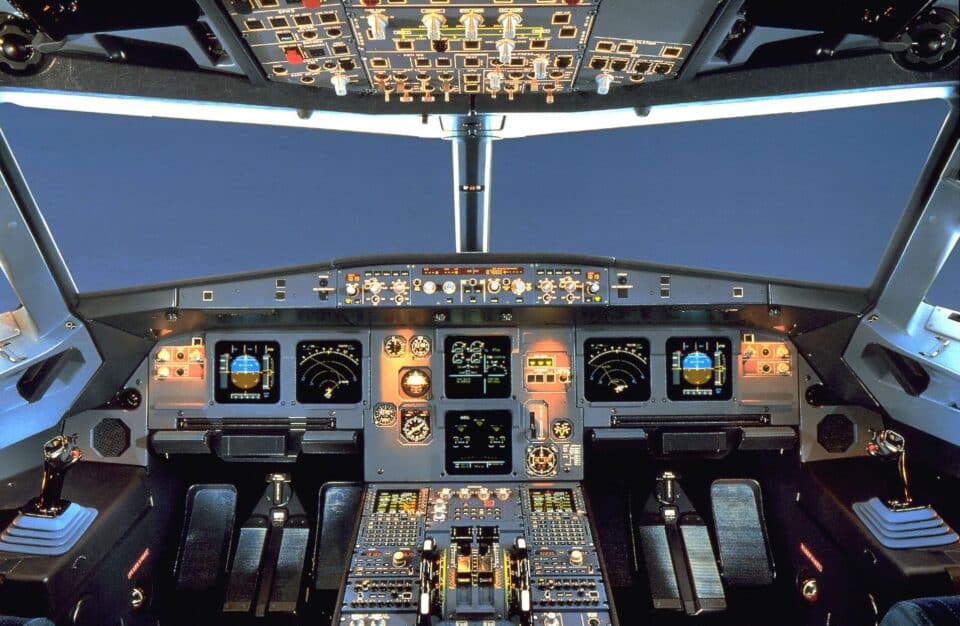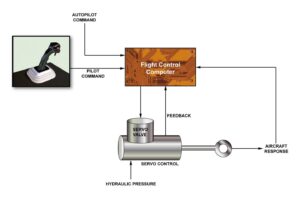Aerospace
What is Fly-by-wire system ? how it reduced aircraft maintenance

It’s a proven truth that since the 1950s, and particularly over the last three decades, our sector has made major advancements in safety, and technology has played a big role in ensuring that the safety records of the whole aviation industry have greatly improved.
In this article, we discuss a few of the technological advancements that have significantly enhanced the safety of our goods. Fly-by-wire will be discussed first.
Fly-by-wire flight control systems are those that use computers to process the pilot or autopilot’s inputs for flight control and then send the relevant electrical signals to the actuation on the flight control surface. Direct mechanical linking is being replaced by this technology.
Fly-by-wire has a number of benefits, including the possibility to save weight by doing away with cables, pulleys, and rods, as well as increased safety, durability, and manoeuvrability.
Since the first Airbus A320, which debuted in 1988, and the most recent models of competing aircraft, including the B777, B787, and Embraer E-jets, fly-by-wire technology has been a standard feature on every Airbus aircraft, including the A220.
The aircraft that have been used but since, known as the fourth-generation aircraft, have collected more than 30 years of in-service time. A fleet of more than 14,500 operational aircraft represented more than 200 million cumulative flights as of the end of 2021, which is a solid statistical base. The safety and effectiveness of aircraft operations have been greatly enhanced by fly-by-wire.
For more information, please visit our history section.
Courtesy : Airbus

Aerospace
Boeing Transfers Rocket Stage to NASA, Paving Way for Human Moon Mission

Boeing has achieved a significant milestone by providing NASA with the second core stage of the Space Launch System (SLS) rocket.
This crucial component, crafted at NASA’s Michoud Assembly Facility (MAF), is set to propel the Artemis II crew into lunar orbit, marking humanity’s return to deep space after a 50-year hiatus.
The monumental Boeing-built rocket stage, the largest element of the Artemis II mission, will embark on a journey aboard the Pegasus barge, traveling 900 miles to NASA’s Kennedy Space Center.
Comparison of two legendary aircraft B777x vs B747 aircraft:Click here
Upon arrival, it will be meticulously integrated with other essential Artemis II components, including the upper stage, solid rocket boosters, and NASA’s Orion spacecraft within the iconic Vehicle Assembly Building. This intricate integration process is a vital step toward the eagerly anticipated Artemis II launch, slated for 2025.
“Boeing-built products helped land humankind on the moon in 1969, and we’re proud to continue that legacy through the Artemis generation,” remarked Dave Dutcher, vice president and program manager for Boeing’s SLS program. “Together, with NASA and our industry partners and suppliers, we are building the world’s most capable rocket and paving the way to deep space through America’s rocket factory in New Orleans.”
NASA, Lockheed Martin Reveal X-59 Quiet Supersonic Aircraft:Click here
The delivery of Core Stage 2 marks a significant achievement in the evolution of the SLS rocket. Towering over 200 feet and powered by four RS-25 engines, this core stage, coupled with two solid-fueled booster rockets, will generate a staggering 8.8 million pounds of thrust. This immense power is crucial to launching Artemis II and future missions into the vast expanse of space.
The SLS rocket stands unparalleled in its capability to transport both crew and substantial cargo to the moon and beyond in a single launch. Its extraordinary capacity will facilitate the delivery of human-rated spacecraft, habitats, and scientific missions to destinations including the moon and Mars, ushering in a new era of space exploration.
-

 Travel1 week ago
Travel1 week agoAir India to Expand US Operations with Three New Routes After a Decade
-

 Travel2 weeks ago
Travel2 weeks agoWhy We Should Avoid These Stamps in a Passport
-

 Airlines1 month ago
Airlines1 month agoInvestigations Reveal Fake Chinese Titanium in Boeing and Airbus Jets
-

 Tech4 weeks ago
Tech4 weeks agoChina’s CATL Plans 1,800-Mile Electric Plane Launch by 2027
-

 Airport3 days ago
Airport3 days agoTop 10 Largest Airports in the World by Size
-

 Aerospace4 weeks ago
Aerospace4 weeks agoChina’s Fighter Jets Turn Wings into Autonomous Drones
-

 Airlines4 days ago
Airlines4 days agoAir India Rolls Out A350s for Delhi-New York JFK and Newark Routes
-

 Defence3 weeks ago
Defence3 weeks agoBoeing Enhances Chinook with New Engines and Block II Upgrades at $96 Million








